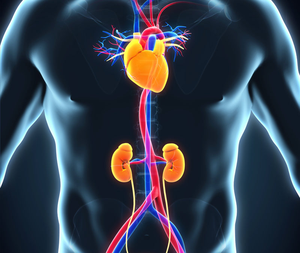New Delhi: As Tamil megastar Rajinikanth was successfully treated for swelling in his aorta, or the main blood vessel leaving his heart, health experts on Wednesday said eight out of 10 individuals with a ruptured aortic aneurysm do not reach the hospital alive.
An aortic aneurysm is a dangerous condition where the aorta, the body’s largest artery, becomes enlarged by more than 1.5 times its normal size.
According to Dr Sanjeeva Kumar Gupta, Consultant, Department of Cardiology at C.K. Birla Hospital in the national capital, while typically symptomless, if it dissects or ruptures, it can cause severe chest, abdominal, or back pain and lead to life-threatening bleeding.
Risk factors include smoking, heavy alcohol use, hypertension, and advanced age.
Aortic aneurysms are treated through surgery, either with open surgery or minimally invasive endovascular aneurysm repair (EVAR).
Dr Krishna Chaitanya, lead consultant, vascular and endovascular surgery, Aster RV Hospital, Bengaluru, said that it is rather unfortunate that most aneurysms do not produce symptoms until it presents a rupture.
“Only a handful of fortunate individuals have it detected incidentally during a CT scan or ultrasound examinations for unrelated conditions. Some studies estimate about 12 per cent of the adults over 65 years of age suffer from aortic aneurysm while a lesser percentage is seen in younger individuals,” Dr Chaitanya told IANS.
Several cases of sudden deaths are erroneously branded as massive heart attacks or natural ageing, while the actual cause is never discovered.
“It is said that eight out of 10 individuals with a ruptured aortic aneurysm do not reach the hospital alive. At present, active aortic aneurysm screening is the only way to detect aortic aneurysm in the population ‘at risk’,” Dr Chaitanya noted.
According to the private hospital in Chennai where Rajinikanth was treated, “he had a swelling in the main blood vessel leaving his heart (Aorta), which was treated by a nonsurgical transcatheter method”.
According to doctors, the EVAR procedure involves placing a stent graft via a small incision to reinforce the weakened part of the aorta and prevent rupture.
For smaller aneurysms or patients unfit for surgery, medical therapy focuses on managing risk factors like high blood pressure and cholesterol, along with regular ultrasound monitoring. As undetected and untreated aneurysms can have devastating consequences, many developed countries have incorporated aortic aneurysm screening into their national health system. For instance, the NHS in the UK sends a screening invitation to every man after his 64th birthday.
–IANS


Comments are closed, but trackbacks and pingbacks are open.